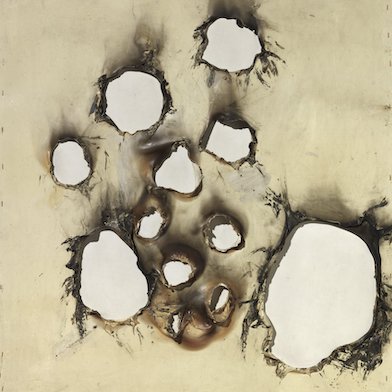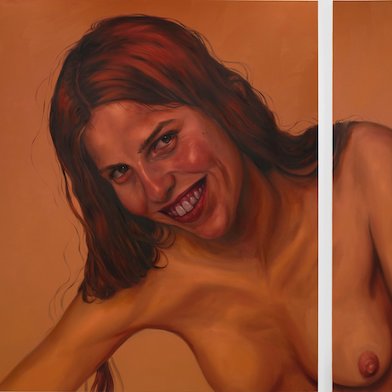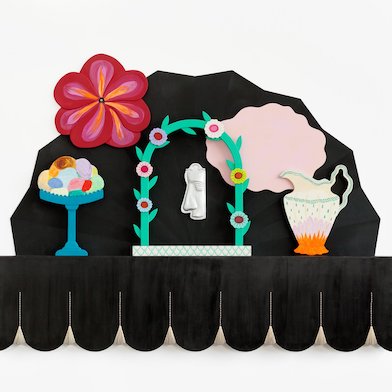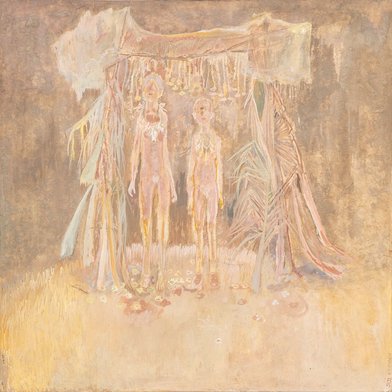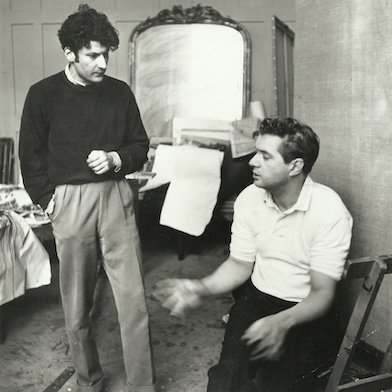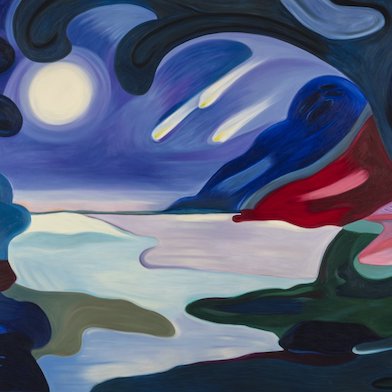Open: Tue-Fri 10am-6pm, Sat 10am-5pm
Visit
Joan Miró: Sculptures
Skarstedt, Paris
Thu 4 May 2023 to Sat 24 Jun 2023
2 Avenue Matignon, 75008 Joan Miró: Sculptures
Tue-Fri 10am-6pm, Sat 10am-5pm
Artist: Joan Miró
Skarstedt presents its first exhibition dedicated to the work of Joan Miró (1893-1983). On view in Paris, the city the Spanish artist frequently called home and where many of the exhibited works were forged, Joan Miró: Sculptures examines a pivotal, yet often overlooked moment of prolific experimentation in the artist’s œuvre.
Featuring fifteen works from 1967-1981—the period in which Miró was most dedicated to sculpture and created over 300 works—the exhibition provides an opportunity to understand the maturation of the artist’s earlier investigations into three-dimensional forms. These intimately-scaled sculptures demonstrate Miró’s ability to transform humble objects into symbolic expressions of femininity, the cosmos, and the natural world.
Miró first gained recognition for his colorful and playful abstract paintings of biomorphic shapes and dreamlike imagery of subjects such as birds, women, and constellations. Indeed, his paintings remain the best-known element of the artist’s sweeping body of work. However, Miró’s fascination with volume was sparked much earlier when, at age nineteen, his teacher assigned him exercises to draw objects by touch while blindfolded. In the late 1920s and early 1930s, Miró first experimented with sculpture in a series of assemblages that coupled paint with found objects. The 1940s—an inspired turning point in the artist’s practice—saw the bourgeoning of his sculptural work as Miró began using bronze while simultaneously exploring the possibilities of ceramics alongside Josep Llorens Artigas. In the 1950s, as his proficiency with bronze increased, his assemblages became increasingly playful and sturdy. By the late 1960s, Miró had fully committed himself to sculpture, working almost exclusively in bronze from then on, becoming a master of the patina and deftly using it to morph an item into something else entirely. Joan Miró: Sculptures focuses on this particular period of Miró’s œuvre, a time of abundant activity in which he worked at a frenetic pace. During these years, Miró worked with some of the best-known foundries in the world, such as Fundició Parellada in Barcelona and Fonderie T. Clementi and Fonderie Susse in Paris, who he first came to know through his connections to Alberto and Diego Giacometti.
It was also around this time that, at the advice of Aimé Maeght, Miró turned a greater focus toward a source of inspiration that would remain an anchor in his sculptural work: Nature. “May my sculptures be confused with the elements of nature, trees, rocks, roots, mountains, plants, flowers,” the artist once mused.[1] Most of the works on view are based on the things he would collect on his late afternoon walks through cities such as Paris or Mont-roig, as well as the woods and beaches he frequented, consistently choosing items that seemed inconsequential, but were regarded as living creatures with great expressive potential. As he noted, “For me an object is something alive. Objects sometimes contain a secret life more intense than that of certain human beings. Stillness overtakes me. A bottle, a glass, a big pebble on a deserted beach can trigger great movements in my mind.”[2] Miro’s skillful use of free association led Andre Breton to call him “le plus surréaliste d’entre nous” (the most Surrealist of us all).[3] These items form the foundation of several works on view, such as the seashell that adorns the crowning head of Le Pèlerin [The Pilgrim] (1972) and the post of Tête et oiseau (1981), or the cetacean skull on which a beam and shoe last precariously balance in Tête de femme et oiseau [Woman’s Head and Bird] (1972). As a case in point, the shoe last—the wooden mold on which a shoe is formed—is a ubiquitous symbol throughout Miró’s sculptures, and became so as the result of a chance of fate. A sculptor who used one of the same foundries as Miró, left a box of them behind. They were nearly used for wood to light their ovens until Miró intervened.
Humbleness and humor are a constant reality in Miró’s work, exemplified by his statement “I experience the vital need to achieve a maximum intensity with a minimum of means…Humor in my work springs from my need to scrape the tragic side of my temperament.”[4] His admiration of popular art and simple objects is echoed in the choice of a rake as a totemic figure and bold primary colors in Femme et oiseau [Woman and Bird] (1967). Eggs that become stars and croissants that turn into the moon animate works such as Constellation Silencieuse [Silent Constellation] (1970) and Tête au croissant [Head with Croissant] (1977). It is through this unpretentiousness that Miró was able to uncover a sense of radiance in the natural world. Incorporating found objects in art has its origins in the early 20th century, and has been explored by a swath of artists ever since. Uniquely, Miró did not try to couch the origins of his objects, but instead imbued them with poetry through the simple act of altering their purpose. Along with his passion for popular art and humble materials, Miró speaks about the eloquence of silence, evoking the search of a “silent music” through his work.[5]
If Miró’s initial foray into sculpture in the late 1920s was, as he himself noted, an attempt to further his desired “assassination of painting,”[6] then this period of intense sculptural production represented in Joan Miró: Sculptures highlights a new attempt to transgress his own work. By working ineditions, both monumentally and intimately, as in this show, Miró inherently made his work more accessible to a broader audience. Part of his fascination with sculpture was his desire to get out of his painting studio and into the world. This shift in medium responds to his strong desire to have a “love affair, so to speak, with my land, with the Earth.”[7] Women become vibrating, columnar presences; heads become moons and coat hangers become bodies; birds are born out of found driftwood and shoes; and constellations are dappled across a weighted sky. There is a sense of destruction and reinvention at play in these works—and in Miró’s sculpture more broadly—that makes his work in three dimensions one of the most unique yet universally understood experimentations with the medium.
1 M. Rowell, Joan Miró: Selected Writings and Interviews, Boston, Twayne Pub, 1986, p. 175.
2 Miró’s words, published under the title Je travaille comme un jardinier (I Work like a Gardener), were collected in 1959 by Yvon Taillandier for the Revue XXe siècle and first published in 1963.
3 ibid. p. 74
4 op.cit Je travaille comme un jardinier, p. 65.
5 A. de la Beaumelle, Joan Miro, 1917-1934, La naissance du monde, exh. cat., Paris, Centre Pompidou, 2002, p. 332.
6 In. L’Intransigeant, 7 July 1930, interview of the artist with Tériade.
7 Miró à Sweeney, Partisan Rewiew, 1948, in. Ecrits et entretiens, selected by M. Rowell, Paris, Daniel Lelong, 1995, p. 228.
